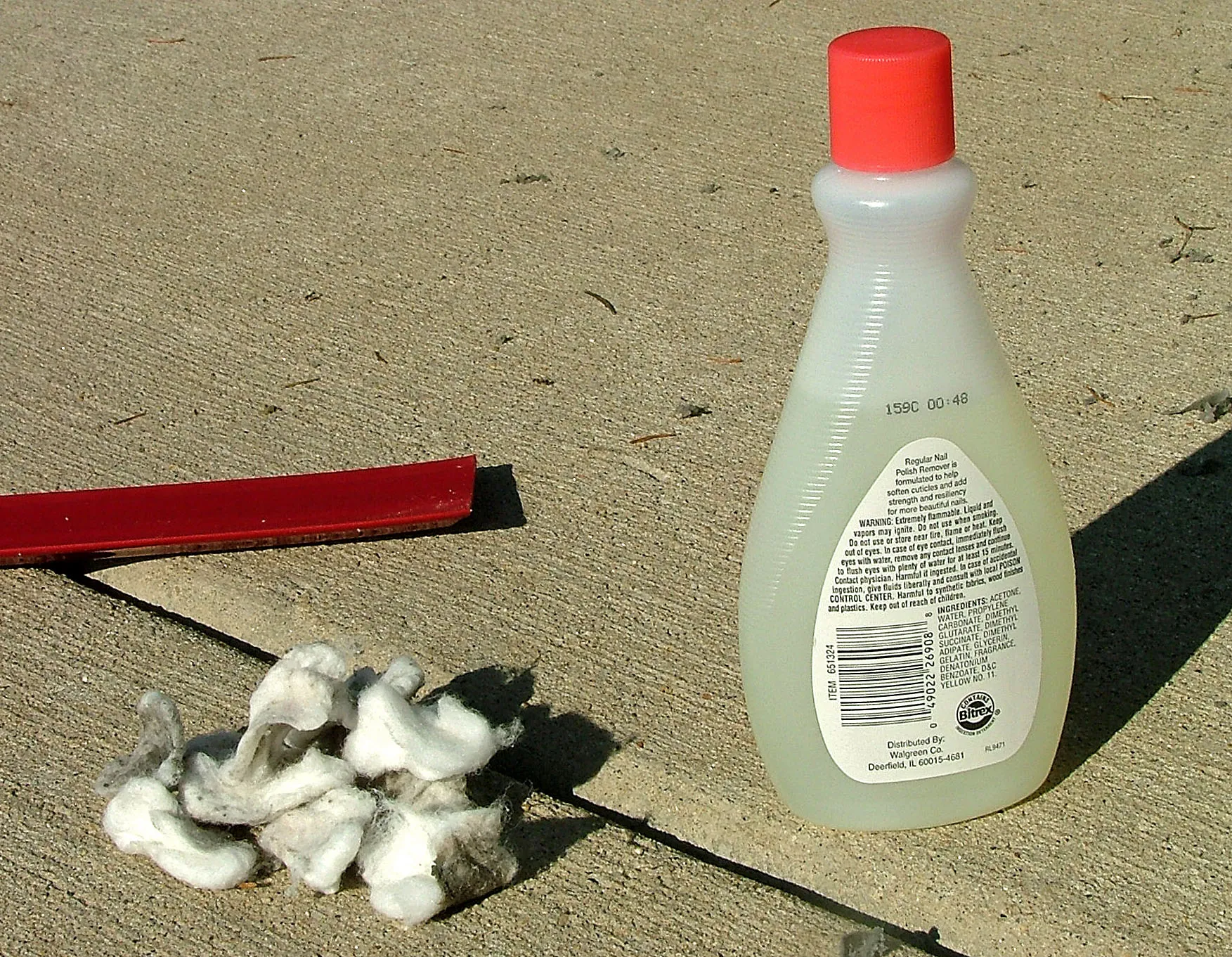The Ultimate Guide: How to Dispose of Acetone Safely Without Harming the Environment
Did you know that Acetone emissions are estimated to be about 0.73 teragrams/year from human sources alone? That’s like 730,000 metric tons!
You might think that acetone is only used in cosmetics as a nail polish remover. But it’s actually used in many other industries too. You probably have already figured out how special this type of chemical is. You probably have also figured that it needs a special type of handling to make sure that it's always sealed and doesn't evaporate into oblivion.
But honestly, how to dispose of acetone safely tends to be a question that’s asked a lot. Here at Jiffy Junk, we know a thing or two about used furniture pickup and disposal, making us a go-to in the removal world for quite a few things.
In fact, some people even ask us, can I pour acetone down the drain? Nope.
How about tossing it in the trash? Also, No.
What you might not have known about acetone is that it also requires a special method of disposal. Because acetone is a volatile liquid, it needs to be disposed of properly to protect our water system, air quality, and our health.
So yeah—learning how to get rid of it safely is definitely worth your time! And in this post, we’ll learn how to dispose of acetone properly.
Get a Live Quote Now
Connect to a live representative and get a quote in real time for junk removal in your area.Table of Contents
TL;DR
- Proper acetone disposal is essential to prevent harm to both the environment and human health.
- While there are several disposal methods, factors like additives, contamination, and packaging can make the process more complex.
- Acetone can be recycled and reused. It can also be exchanged for less waste.
- There are sustainable alternatives to acetone, some of which can be made at home.
The Chemistry Behind Acetone Disposal
Before we get into how to dispose of acetone, let’s talk about why it needs special handling in the first place.
Acetone is considered a volatile organic compound, and its vapour pressure makes it evaporate easily at room temperature. It also mixes with water effortlessly, and this quality makes it spread widely and quickly in water, and harder to dispose of.
Sure, acetone doesn’t stick around in the environment as much as other solvents, but that doesn't mean that it's harmless. Let's break this down a little!
Acetone has a half-life of around 22 days, but it can still travel very long distances before it breaks down! And along the way, it can pass by any kind of aquatic life and cause serious damage to it. In fact, it's considered some sort of toxin to aquatic life, which is.. definitely not good!
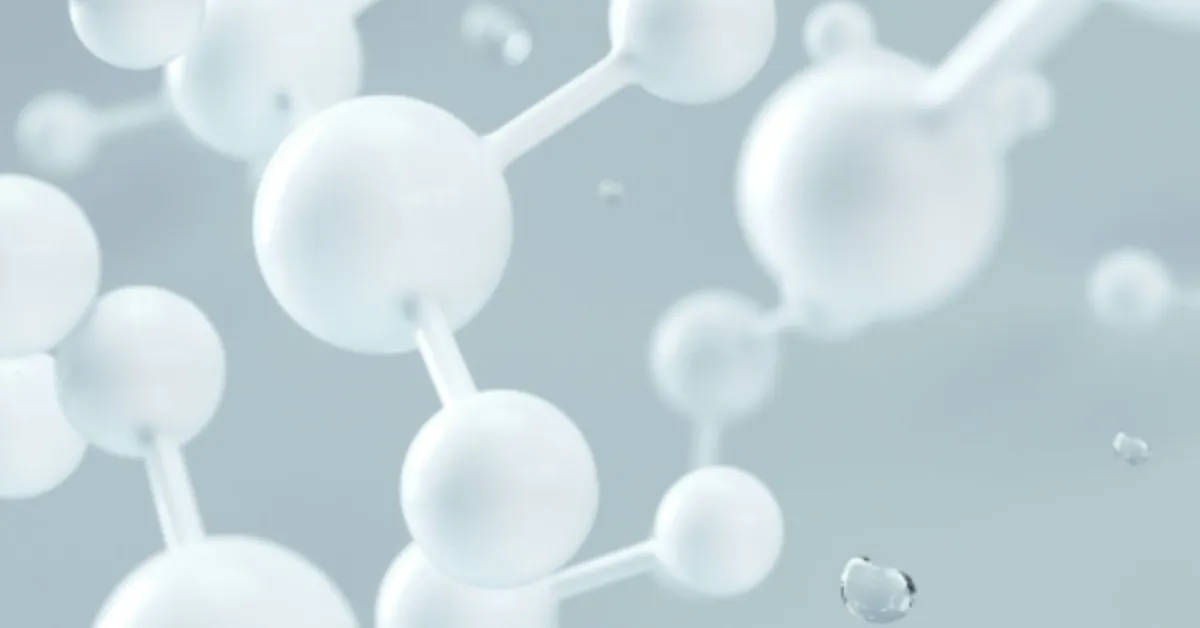
Acetone disposal can be challenging because of its molecular structure.
Source: unsplash.com
Health and Environmental Impact
Because acetone has unique chemical properties, it must be disposed of in specific ways. What makes it even trickier is that it behaves differently depending on what it comes into contact with. So, whether it’s air, water, oil, or soil, each case will require a different approach for disposal.
Let's talk about air and water as examples of these interactions.
Acetone vapor is twice as heavy as air. This makes it fall and possibly accumulate on the ground. And it can be a problem if it accumulates near any ignition sources.
So, can it cause any serious problems while using it? Well, maybe.. but maybe not. I mean, if we're talking small quantities, controlled outdoor evaporation, and a place away from ignition sources, plants, and wildlife.. It’s probably okay. But still, caution is key!
And, seriously.. Please don't sniff it! Because I have bad news for you!
Sniffing acetone is bad for your health. It can cause all kinds of issues like irritation, headaches, confusion, nausea, etc. So, yeah.. Best stay safe!
Okay, so now let's talk about acetone with water.
Because acetone is highly soluble in water, it's very difficult to remove effectively using conventional water treatment processes. That’s why pouring it down the drain is a big no-no. It can alter water chemistry, harm aquatic ecosystems, and damage sensitive organisms. Even at low levels, it’s considered toxic and can mess with cell membranes.

Improper disposal of acetone in water can affect aquatic ecosystems
Source: Pexels.com
Concentration Thresholds and Disposal Decisions
Concentration thresholds are one of the things that you should consider when disposing of acetone. They can help you a lot with choosing the proper disposal method for different acetone-containing products. And if the chemical’s concentration exceeds that threshold, it will officially become a hazardous waste.
The tricky part? Concentration thresholds depend on where you are. For example, the US Environmental Protection Agency (EPA) sets the limit at 22.8 mg/L. Anything higher than that, and it’s marked a hazardous waste.
Now, you might be thinking: Can’t we just dilute it to stay below the limit?
Well… it sounds clever, but it’s really not a good idea.
You see, diluting acetone might reduce its concentration, but it increases the total volume of contaminated waste. That means more material to deal with.. and more chances for it to spread. So instead of solving the problem, you’re just making it bigger and harder to treat. Not exactly the win it seems like.
Acetone-Soaked Materials
Acetone-soaked materials need special care. And even more careful handling, since they’re considered fire hazards.
If you’re planning to throw them away, make sure to let them dry completely first. This can take from 24 to 48 hours, but you will know they’re ready when their weight doesn’t change and the acetone smell is gone.
Once they’re dry, can you toss them in the trash? Well… not quite yet.
Some areas still require hazardous waste disposal even for dried materials, so check your local regulations first. Better safe than sorry!
At Jiffy Junk, we offer a wide range of disposal services, such as debris removal, yard waste removal, and scrap metal pick up. While we don’t specifically dispose of acetone, you’re welcome to give us a call or contact us through our website for more instructions and information on how to dispose of acetone. You can also chat with our website’s AI assistant (bottom right) and ask for a representative to continue the conversation with. We also offer a free one-click virtual estimate service. All you need to do is click the bell in the left-hand corner, enter your details, and start your estimate.
Jiffy Junk handles various types of waste and works hard to find sustainable disposal solutions for different materials. Here, we are committed to environmentally responsible disposal practices for various waste types.
While you’re here, be sure to check out our post on garage cleaning and space reclamation.
The table below provides instructions on how to dispose of different acetone-soaked materials properly:
| Material Type | Drying Time | Disposal Method After Drying | Special Considerations |
|---|---|---|---|
| Cotton balls/pads | 12-24 hours | Regular trash (most jurisdictions) | Spread thinly for faster evaporation |
| Paper towels | 8-12 hours | Regular trash (most jurisdictions) | Unfold completely for maximum surface area |
| Cloth rags | 24-48 hours | Regular trash or textile recycling | May require multiple drying cycles if heavily saturated |
| Microfiber cloths | 24-36 hours | Regular trash or textile recycling | May retain acetone longer due to dense fibers |
| Sponges | 48-72 hours | Regular trash | Cut into smaller pieces to accelerate drying |
Beyond the Drain - Ethical Disposal Frameworks
Here are a couple of shocking numbers for you!
A report by the United Church of Christ found that about 56% of people living within 3 km (about 1.8 miles) of hazardous waste facilities in the US are people of colour. And it doesn’t stop there.. These same communities are twice as likely to have folks living below the poverty line compared to other neighbourhoods without those facilities.
Yeah.. not exactly fair, right?
This really makes you think about the ethics of how we dispose of hazardous waste.. Who is affected and why?
The good news is.. There are ways to make things better! Concepts like environmental justice, Intergenerational responsibility, and circular economy are all about fixing this imbalance. They aim to keep it safer for vulnerable populations and future generations while recovering as many resources as possible.
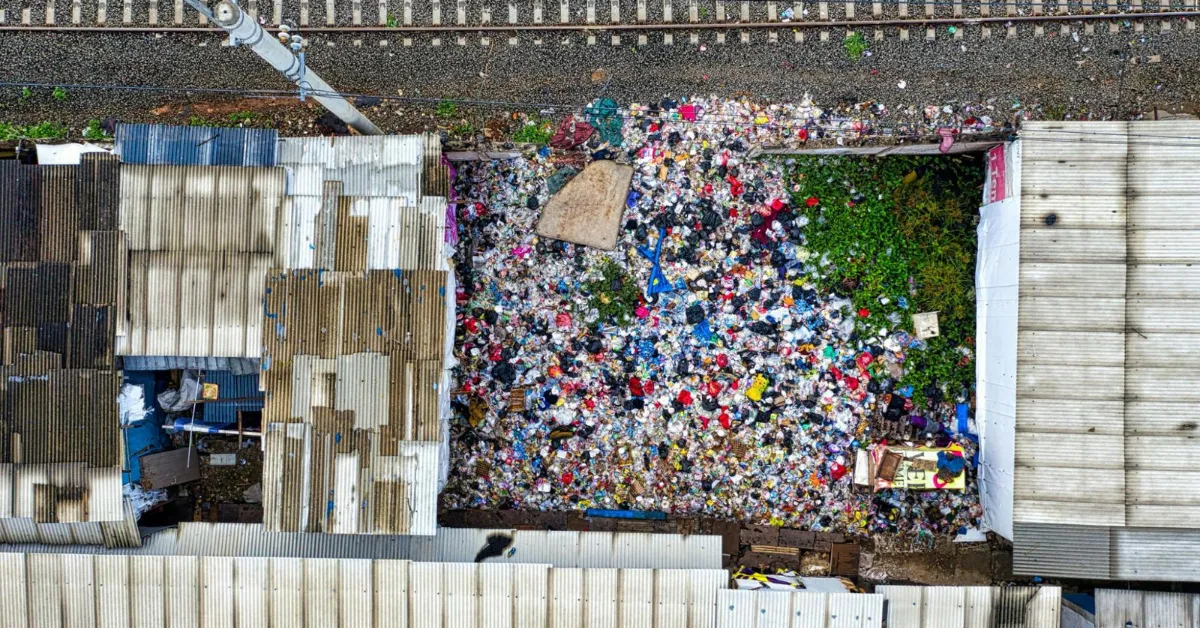
A lot of minorities tend to live near hazardous waste facilities. Acetone disposal in these facilities can affect their health.
Source: Pexels.com
Social Justice Perspectives and Intergenerational Responsibility
The shocking numbers keep coming, so buckle up!
The average US household produces about 30 pounds of hazardous waste yearly. Adding the numbers here and there.. That's about 1.6 million tons every year in the US alone.
So yeah, that’s another reason why we should dispose of materials properly. We definitely don’t want them to pile up in the wrong places and start putting people’s health at risk.
So, how do we make sure hazardous waste is disposed of safely.. and kept away from communities?
It starts by choosing reliable disposal methods and waste facilities. And the emphasis is on facilities, because if you're already here, you probably care about finding the most responsible way to get rid of waste.
So, how can we find the right ones?
Look for ones with strong environmental records and fair labor practices. That’s usually a good sign that they’re not cutting corners — and that your waste won’t end up contributing to environmental injustice.
When it comes to chemicals, disposal gets even trickier. Not just because they need special disposal methods, but they also last longer than other materials. If they’re not dealt with properly, they can harm ecosystems for generations.
And if the chemicals are already toxic? Well, that damage multiplies fast.
Circular Economy Approaches
Circular economy doesn’t see acetone the way most people do. It doesn't think about it as something to toss out.. it sees an opportunity to recycle and reuse it. Obviously, recycling is more sustainable and friendly to the environment. But we're talking about acetone here.. some kind of toxic chemical. Is recycling it really a good idea?
Surprisingly — yes!
Just because acetone has some sort of toxicity level doesn't mean that recycling it is a bad move. It's actually way better than disposing.
Why? Because it means less acetone ends up in the environment, and more of it stays in circulation where it can actually be used. Distillation is a great example of this. There are several distillation methods out there that can recover acetone at up to 99% purity. That’s a win for the environment and for efficiency.
Home Distillation Considerations
Among the many distilling methods, some can even be done at home. But you have to be careful. These methods still require specialized equipment and safety measures. Make sure you have heat-resistant glass containers (like borosilicate glass), a proper condenser, and a well-ventilated area to work in.
Are there specific measures you should take?
Absolutely!
You’ll want to use a thermometer to monitor the temperature. Acetone should stay between 56–60°C, and it definitely should not go over 70–80°C.
And don’t skip safety!
Keep all ignition sources at least 10 feet away, and use materials rated for thermal cycling to handle temperature changes safely.
And one more thing — check your local regulations. In some areas, you might need a permit to distill acetone at home. Better safe than sorry, right?
This approach carries significant safety risks, including fire hazards and toxic vapor exposure. Only attempt with proper training, equipment, and adherence to local regulations regarding the distillation of solvents.
If you can't do this at home, though, worry not.. we have a solution for you!
The City of Phoenix has recently announced that its Public Works department is now offering residential customers assistance with proper disposal of household hazardous waste, including acetone. The collection service keeps these materials from entering regular waste streams.
You can also check our Jiffy Junk residential junk removal services and find the nearest location to your place. We offer a full service junk removal and will be more than happy to help you if you have a question on doing disposal the right way. While we don’t help with the removal of hazardous waste, we care deeply about the environment and are sure to impress you with our White Glove Treatment option, leaving behind a super clean space for you to enjoy.
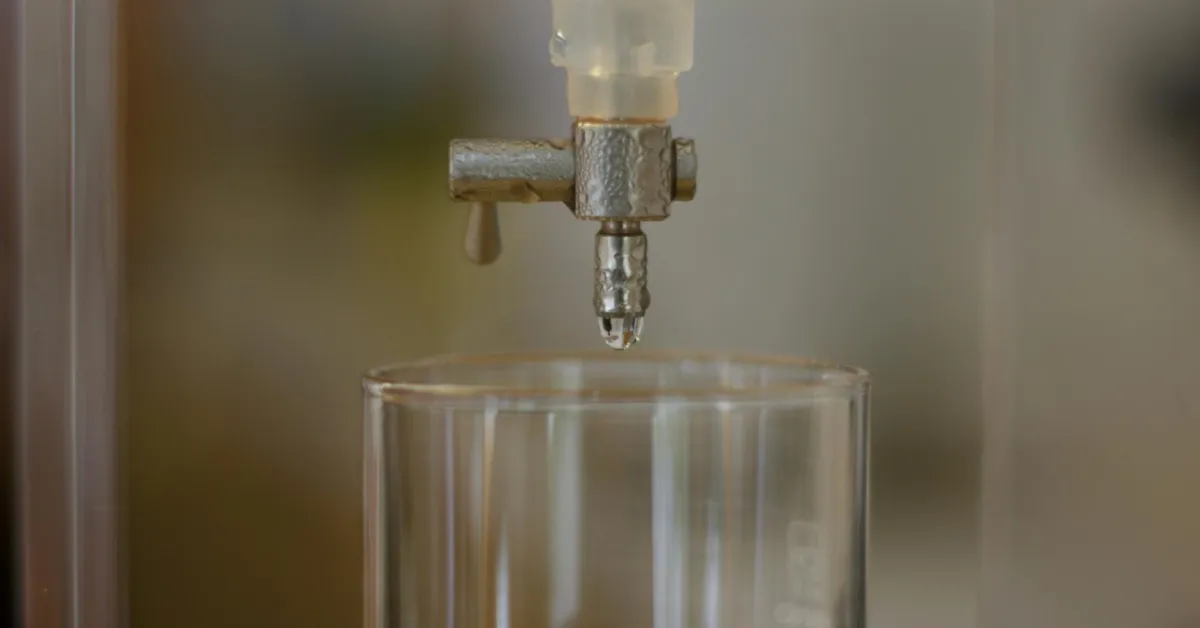
Instead of disposing of acetone, home distillation is one way to recycle it.
Source: unsplash.com
Community Resource Sharing
Got unused acetone?
Instead of throwing it out, you might want to give the exchange idea a chance. Material exchange networks like RENEW (Resource Exchange Network for Eliminating Waste) and EME (Excess Materials Exchange) are perfect for that. And acetone is one of the requested materials on these platforms.
If you decide to go down this road, make sure your acetone is safely packed for the journey. A sturdy container, like high-density polyethylene (HDPE) bottles with phenolic caps, makes a great vessel. It resists degradation from acetone’s strong solvent properties.
Make sure to label that container too. The recipient will need the right info to handle it properly. Add details like concentration (if known), original purpose, potential contaminants, and date of packaging.
Nail Polish Remover - The Consumer Context
So, you probably already know that nail polish remover is the most common household form of acetone. But did you know it requires specific disposal practices?
Well, it’s because factors like formulation, packaging, and how it’s used in personal care routines all influence how it should be handled after use.
Here’s something to consider: The nail polish remover market was valued at about $1.59 billion in 2023. And the study shows waiting tables rising to $2.5 billion in 2032.
A promising market, sure.. but maybe not so promising for the environment.
Not so fun fact: the environmental impact of acetone mostly comes from the disposal phase, compared to manufacturing or shipping. The acetone disposal process already has its risks.. Imagine when it’s also not properly disposed of!
When acetone disposal is not done properly, it can pose risks to air, soil, and water. Also, don’t forget about the fire hazard!
Kind of makes you think twice about how we use acetone on our nails, doesn’t it?

Nail polish remover disposal should be done properly because the nail industry requires responsible handling.
Source: vecteezy.com
Formulation Variations and Disposal Implications
So, how to dispose of nail polish remover?
Not all nail polish removers are made with pure acetone. Many of them have other ingredients that can complicate the disposal process. So, checking the ingredients and understanding what’s inside can help you choose the safest way to handle acetone.
Acetone content in these standard removers typically ranges from 30 to 60%. So, less acetone means more additives. But they are not the cute kind, though. Some of them can affect how long a product lasts in medium. Meaning.. searching for more methods of disposal!
That’s why it’s important to consider all aspects of waste management when it comes to nail polish removers.
You can also check this YouTube video, which explains a couple of easy acetone disposal methods for you to try.
Before you head out, be sure to check out our decluttering guide. While not part of acetone disposal, it can get your place ready for anything whilst you check for things that need to be properly disposed along the way!
Acetone-Free Formulations
It's true that you can find other nail polish removers labeled acetone-free. But just because they don’t include acetone doesn’t mean they’re automatically better for the environment.
Many "gentle" or "nourishing" formulas have solvents like ethyl acetate or methyl ethyl ketone instead. And different ingredients mean different disposal needs. In fact, they are worse than acetone! Because they have lower volatility and tend to linger longer in the environment.
If you’re unsure about what’s in your remover, feel free to reach out to Jiffy Junk. We’ll help you identify the main solvents and guide you through safe disposal.
You can also check our eco-friendly trash removal services, where you will find more comprehensive waste management strategies and tips.
Packaging Disposal Challenges
So, welcome to another disposal challenge… the containers.
Once you're done with the acetone, you're still left with the container to deal with. And yep—I said after on purpose, because the container should be handled separately from the chemical inside.
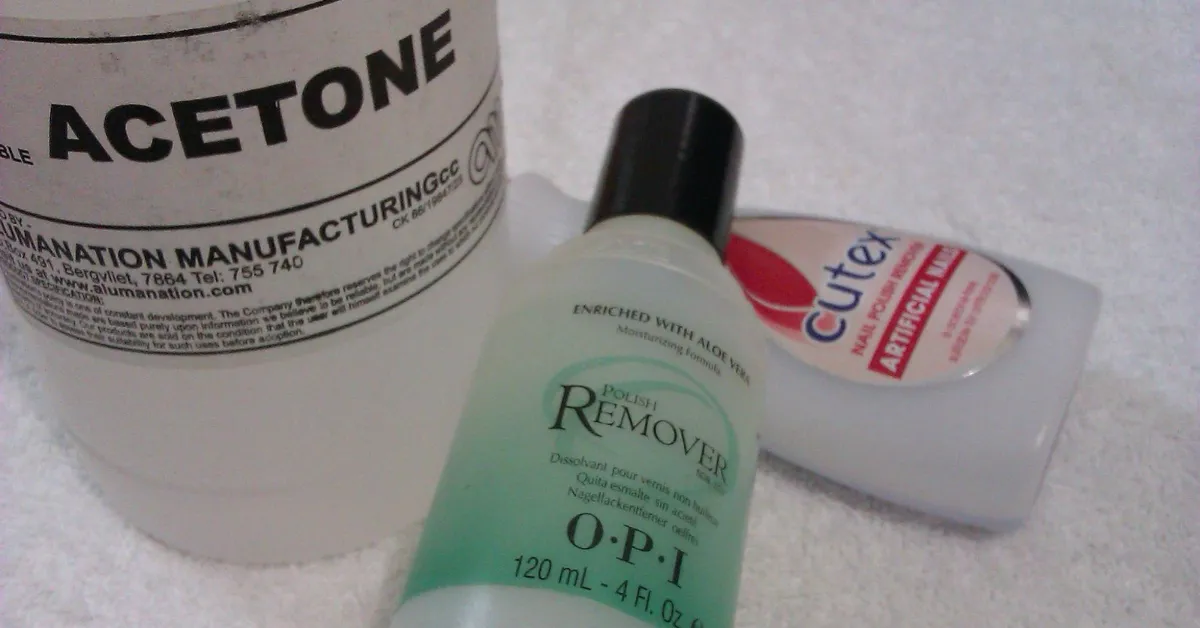
The containers offer another acetone disposal challenge to deal with.
Source: flickr.com
Container Residue Management
Empty nail polish remover bottles aren’t really “empty” after we finish with them. There will still be some tiny bits of acetone left. So, before disposing of your container, make sure it's really acetone-free.
Rinse the container with a small amount of water in a well-ventilated area (remember.. not down the drain). You can then collect the rinse water in a separate container for hazardous waste disposal. Then, let the plastic containers air dry completely before recycling according to your local guidelines.
Now, when rinsing your container, make sure to follow one of the triple rinsing protocols. Why? Well, some facilities have high-tech tools to detect even the smallest amount of chemicals. And if they find that your container is not acetone-free, they will reject it.
Triple rinsing protocols are super effective in this situation because they can reduce chemical residues by 99%!
Here’s a good example of these protocols:
- Start by rinsing out the inside of the container.
- Pour off the acetone rinse into a hazardous waste container.
- Repeat this for another two times, with a total of three. Three is the absolute minimum here, so if you still have acetone in your container, repeat the process as many times as necessary.
- Once your container is finally empty (based on the criteria), cross out the label and stick on a blue "Triple Rinsed" sticker.
Pump and Dispenser Mechanisms
Some nail polish removers come with complex dispensers that have springs, gaskets, and multiple plastic types. In this case, it's best to take them apart if you can, so each piece can be assessed separately for recycling potential. Plus, disassembling helps avoid hiccups in the recycling process. Intact pump mechanisms, for example, can jam sorting equipment and cause delays, and sometimes even need a mechanic to fix!
For standard dispensers, you can usually take them apart with basic tools at home. However, some components might still require industrial processes to separate them properly
Professional and Industrial Contexts
Professional settings like laboratories, manufacturing facilities, and nail salons face another special disposal challenge.
Honestly, I stopped counting how many “special cases” need special disposing methods!
But, anyway..
These challenges come down to things like volume, regulatory oversight, and specialized applications. And acetone is way more used in professional settings than in consumer products.. and more acetone means bigger environmental impact. This also means industries must prioritize proper disposal practices to minimize harm.
And it's not just the environment, of course. OSHA (Occupational Safety and Health Administration) reports stress the importance of proper handling to protect workers and prevent any dangerous incidents.
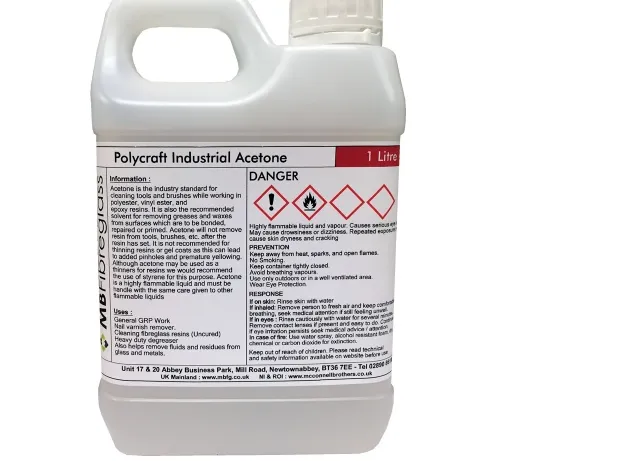
Acetone disposal in industries can take a different form than in households.
Source: mbfg.co.uk
Regulatory Navigation and Documentation
For professional acetone users, there are complex regulatory frameworks that must be followed for disposal. These frameworks span multiple agencies, including EPA (environmental impact), DOT (transportation), OSHA (worker safety), and state-specific environmental departments.
These agencies require that the business keep detailed waste manifests to document quantity, concentration, container types, and final disposition. Some businesses even use digital tracking to record each acetone container from purchase through disposal.
It might sound like a long and boring process, but again.. safety safety safety! And when you're handling large amounts of potentially hazardous chemicals, precautions are key.
Which brings us to our next point.
In professional settings, employees are required to undergo comprehensive training that goes beyond basic safety procedures. The training is so crucial that employees must earn a certificate demonstrating proficiency in acetone handling and disposal before they can work independently with the chemical.
Sustainable Alternatives to Traditional Disposal
While recycling acetone is a great option, finding alternatives to it is even better. Acetone recycling can come with its own set of challenges and potential environmental impacts. It’s very good, as we said, but definitely not better than a completely safe alternative. Opting for more environmentally friendly substitutes can help reduce those effects while still being effective.
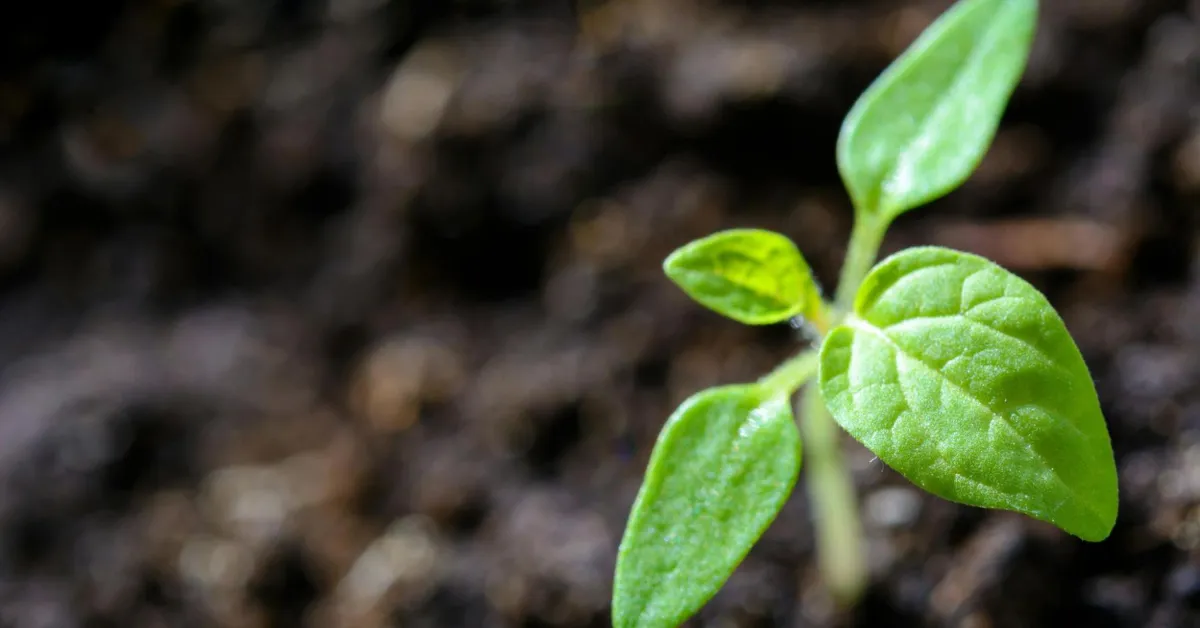
Sustainable alternatives are more eco-friendly and protect the environment from improper disposal of acetone
Source: pexels.com
Acetone Replacement Strategies
The field of bio-based solvents has been offering some pretty promising alternatives lately, especially ones made from renewable resources. A couple of examples you can try are:
- Citrus-based solvents containing d-limonene: They are derived from orange peel waste and provide effective degreasing properties with significantly reduced toxicity.
- Ethyl lactate produced from corn fermentation: It offers similar solvent performance in many applications.
When it comes to bio-based solvents, the green chemistry principle of "safer solvents and auxiliaries" identifies them as priority replacements because of their renewable sourcing and generally lower toxicity.
If you’re thinking about this switch from your everyday nail polish remover, try a small-scale compatibility test to make sure it works for you.
If you don’t find them compatible, you can still make your own nail polish remover at home! This way, you won't have to worry about buying or getting rid of acetone at all.
For non-toxic DIY nail polish removers, you can try these:
- A mixture of equal parts white vinegar and lemon juice: It softens the polish after 10-20 seconds of application.
- Equal parts coconut oil and baking soda: This one is for adhesive removal. It creates an effective paste that breaks down residues when allowed to sit for several minutes.
Experiment with different DIY “recipes” and see what works best for you!
Responsible Acetone Disposal: Learning Recap
We’ve reached the end of our acetone disposal guide.. so, let’s recap what we’ve learned so far!
Improper acetone disposal can negatively impact both the environment and human health. It’s crucial to handle and dispose of acetone properly to avoid any complications.
Factors like additives and containers can make acetone disposal more challenging. So it's important to check the proper disposal method for each case.
For sustainable use, acetone can be recycled for reuse. A more sustainable option would be switching to environmentally friendly alternatives like bio-based solvents and DIY non-toxic nail polish removers.
At Jiffy Junk, we care about the world we live in. While we don’t directly work to remove hazardous waste, we do all we can to protect the environment when it comes to junk removal.
As an eco-friendly junk removal, we’ve helped plant over 15,000 trees and offer some pretty impressive solutions when it comes to disposal, even when you’re in a pinch, we recently started offering financing options to help you get your junk under control. If you’re interested in receiving a quote, head over to our website and click the bell in the bottom left hand corner, we’ll be sure to respond in a jiffy!
More from Jiffy Junk
Robust Service
Interested in Getting Started?
Have a big cleanout job that needs to be done right away? Contact us today. We'll get rid of your junk in a jiffy!
Fast & Reliable
What Our Customers Are Saying
Thousands of satisfied customers across America have shared their Jiffy Junk Experience.
